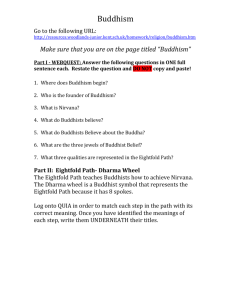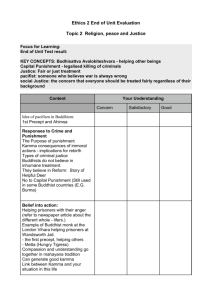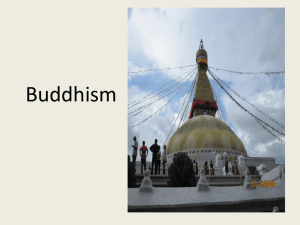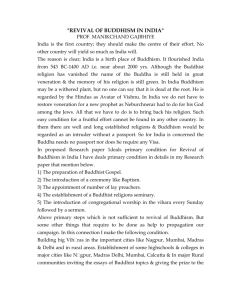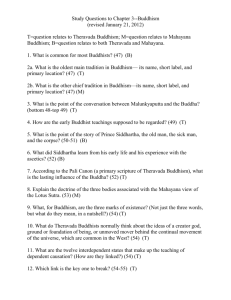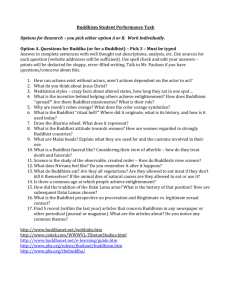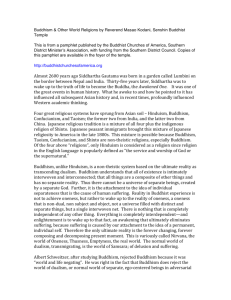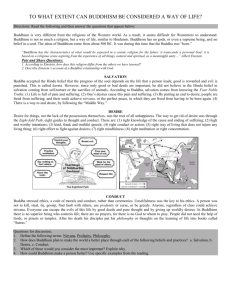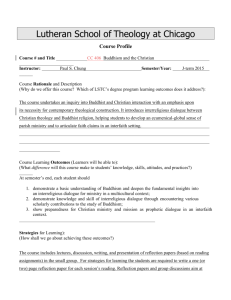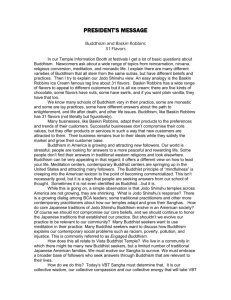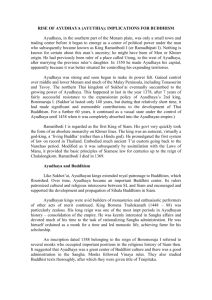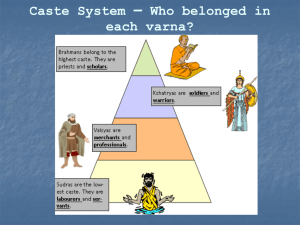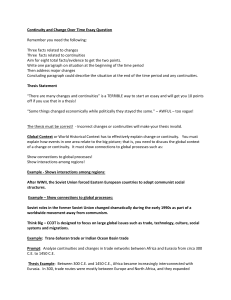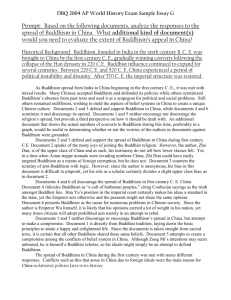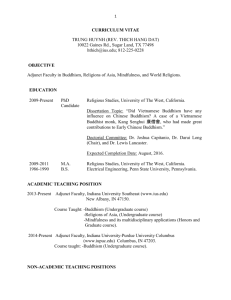Buddhism Class Notes
advertisement
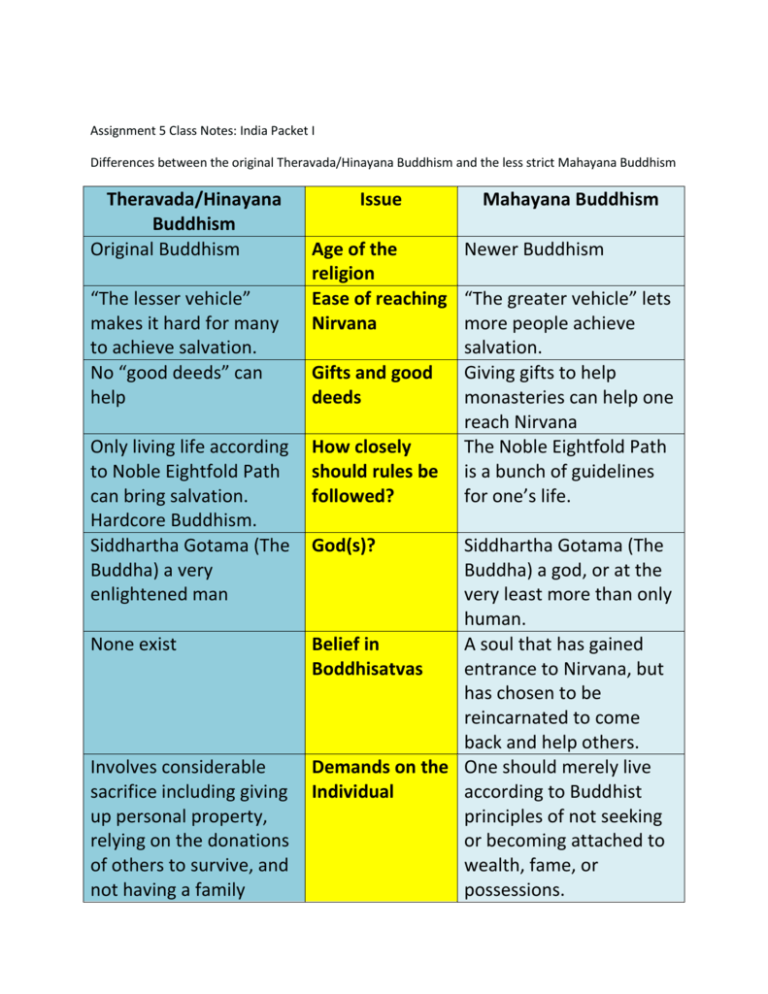
Assignment 5 Class Notes: India Packet I Differences between the original Theravada/Hinayana Buddhism and the less strict Mahayana Buddhism Theravada/Hinayana Buddhism Original Buddhism “The lesser vehicle” makes it hard for many to achieve salvation. No “good deeds” can help Only living life according to Noble Eightfold Path can bring salvation. Hardcore Buddhism. Siddhartha Gotama (The Buddha) a very enlightened man None exist Involves considerable sacrifice including giving up personal property, relying on the donations of others to survive, and not having a family Issue Mahayana Buddhism Age of the Newer Buddhism religion Ease of reaching “The greater vehicle” lets Nirvana more people achieve salvation. Gifts and good Giving gifts to help deeds monasteries can help one reach Nirvana How closely The Noble Eightfold Path should rules be is a bunch of guidelines followed? for one’s life. God(s)? Siddhartha Gotama (The Buddha) a god, or at the very least more than only human. Belief in A soul that has gained Boddhisatvas entrance to Nirvana, but has chosen to be reincarnated to come back and help others. Demands on the One should merely live Individual according to Buddhist principles of not seeking or becoming attached to wealth, fame, or possessions. Reasons Buddhism Spread So Quickly and Became so Popular: 1. Solved Problems of Hinduism a. No caste system, all were considered equal b. Salvation could be achieved in one lifetime instead of many c. Used common language instead of Sanskrit, which only Brahmins were allowed to learn. 2. Economic Reasons a. For the Poor 1. Celebrated poverty, so the poor were already doing well in Buddhism 2. Buddhist monasteries took on the functions of banks, schools, centers of agricultural knowledge and teaching, and safe havens in emergencies. b. For the Middle Class 1. Merchants were welcome to use Buddhist monasteries as inns 2. Gave merchants more chances to associate with nonVaishyas. c. For the Rich 1. Were allowed to keep their wealth as long as they supported the monasteries 2. No longer had to depend on and support higher castes that in many cases generally did not work as hard 3. Expansion a. After 260 bce was favored and supported by India’s ruling elite b. Merchants spread the religion throughout Asia c. Buddhist centers of learning attracted scholars throughout Asia, who then brought the faith back with them upon return home. d. Pilgrims traveling to Buddhist holy sites helped spread the religion.

